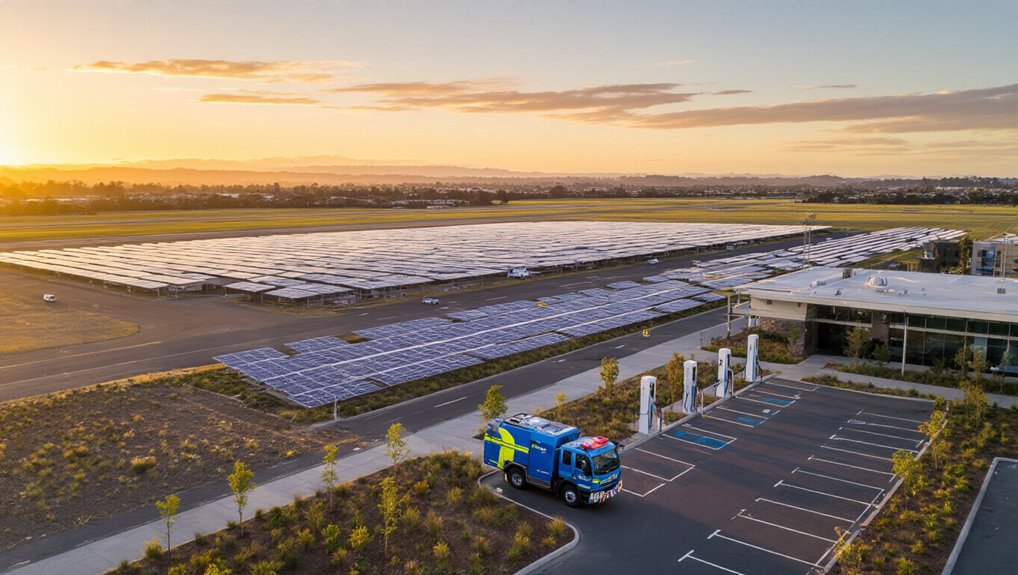A massive transformation is taking shape in Richardton, North Dakota, where corn-based ethanol is getting a high-flying upgrade. Gevo, a biofuel company with big ambitions, just dropped $210 million to purchase the Red Trail Energy ethanol plant. The goal? Turn boring old ethanol into something sexier—sustainable aviation fuel (SAF). Planes guzzle fossil fuels like college kids at happy hour, so this shift matters.
The existing facility already pumps out 64 million gallons of ethanol annually. Not too shabby. But Gevo isn’t stopping there. They’re transforming this plant into a cutting-edge operation where alcohol-to-jet (ATJ) technology will convert corn-based ethanol into jet fuel. Imagine that—North Dakota corn powering flights to Paris. Farm to… flight?
From corn fields to flight paths: North Dakota’s new mission to fuel planes with farm-grown energy.
What makes this site “ideal” isn’t just the corn fields. It’s sitting pretty above the Broom Creek Formation—perfect for carbon capture and sequestration. The facility was actually the first U.S. ethanol plant to voluntarily implement CCS. Overachiever much? The company plans to increase carbon sequestration capacity from 160,000 to 1 million metric tons annually. This project aligns with the broader trend where renewable energy growth persists despite political challenges across the country.
This isn’t just green-washing. The plant aims for “Net-Zero” production, with plans to incorporate wind energy to power operations. The company considers wind turbines to be financially viable despite policy uncertainties in the renewable energy sector. Less carbon means more money in this emerging market. Airlines desperate to look environmentally conscious are lining up.
The economic impact isn’t just hot air. Hundreds of new jobs are coming to Richardton. Local corn farmers get a new market. Over $200 million in direct investment is flowing into North Dakota’s economy. They’re even chasing nearly $1 billion in federal loan guarantees. That’s serious cash.
Behind all this are some serious regulatory tailwinds. Federal and state SAF subsidies make the economics work. North Dakota’s programs help ethanol producers lower their carbon intensity scores. It’s amazing what government incentives can do.
It’s part of a national trend. The U.S. Energy Information Administration projects increased ethanol production for 2025 and 2026. For North Dakota, it means positioning as a leader in next-generation SAF while connecting agricultural productivity with clean energy goals. Not a bad look for corn country.
References
- https://northdakotaagconnection.com/news/gevo-expands-jet-fuel-plans-in-north-dakota
- https://kbhbradio.com/jet-fuel-company-with-plan-for-lake-preston-acquires-additional-site-in-nd/
- https://ethanolproducer.com/articles/north-dakota-creates-program-to-help-ethanol-producers-lower-their-ci-scores
- https://www.mprnews.org/story/2024/06/18/biofuel-groups-envision-ethanolpowered-jets-but-fueling-the-effort-has-not-been-easy
- https://ethanolproducer.com/articles/gevo-shifts-focus-for-atj-project-to-north-dakota









